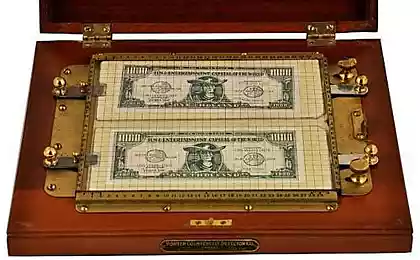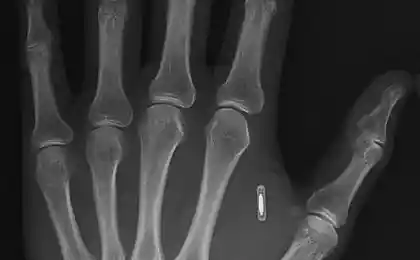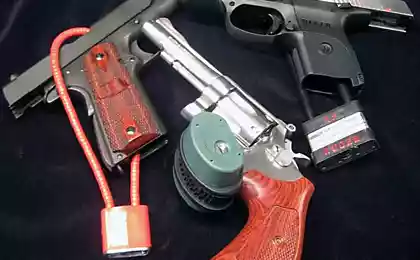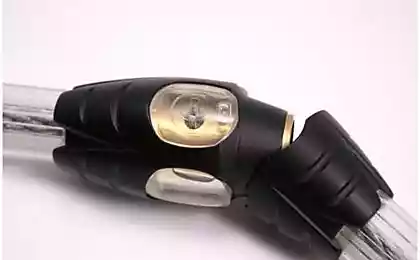1019
The inside of the label on the goods (5 photos)
The author tells how in his hands hit the mark, which is attached to clothes or other items in the stores.
Out of curiosity, I decided to see what's inside a castle.
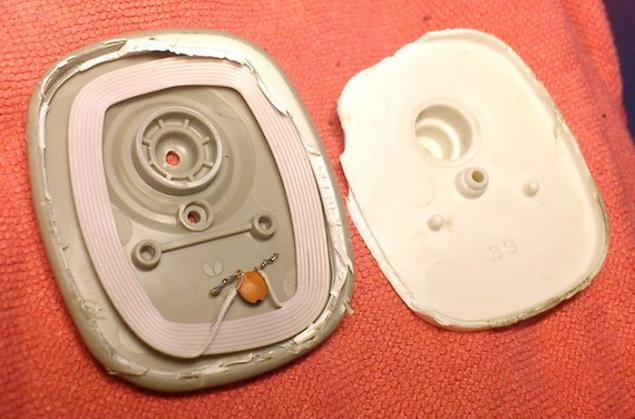
Author: I, in general is always understood that a lock opens a conventional magnetic field of a strong magnet (under the table at the cashier). But I always wondered how exactly such a lock arranged in fact.
So I curiously raskurochil it and decided to share the information with other people who are not familiar with the device vpadlu some fun devaysa.
Strongly do not beat the quality of the pictures. They will 5. One of them - an explanatory drawing of which will be understood by the lock device. (For chertezhik too, please do not hurt me ... Sloth avtokadit- was decided this way, the old-fashioned pen nakalyakat)
Thus, the knife housing disclose labels and find especially radio frequency LC circuit consisting of a capacitor and a few turns of wire.
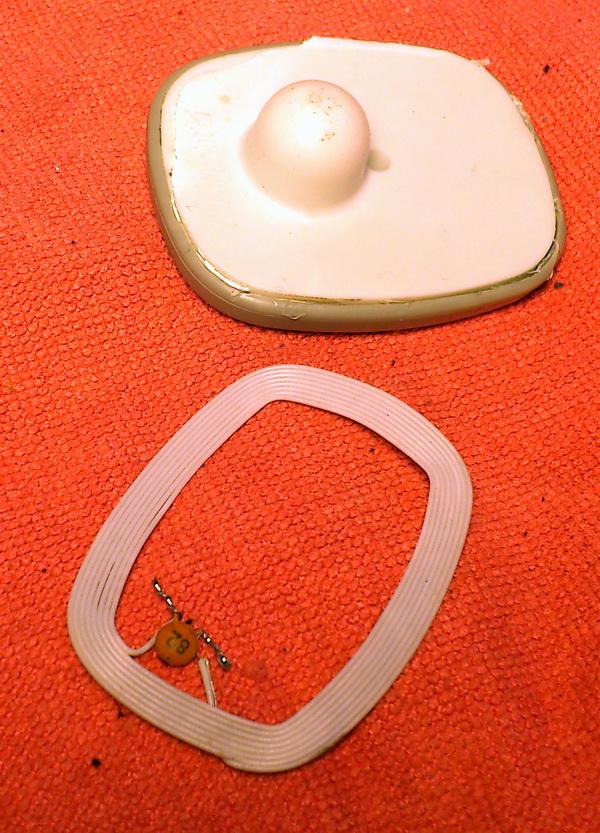
There is no place for boring theory, so we will not go into such boring simple townsfolk concepts such as the quality factor of the oscillating circuit, explain just that, getting into the high-frequency magnetic field between two frames arranged directly before leaving the store, the LC circuit ( in antitheft tags) introduces a change in the oscillation process between the frames that immediately fixed electronic device and an alarm)
That's part of the zamka.Sleva right:
Nail, cone sleeve, balls, centering sleeve, push the sleeve and the spring.
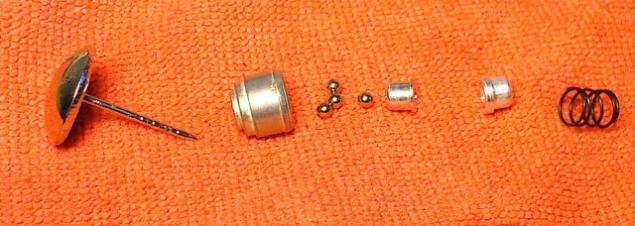
locking stud, they pierce clothing and fix a label on the product.
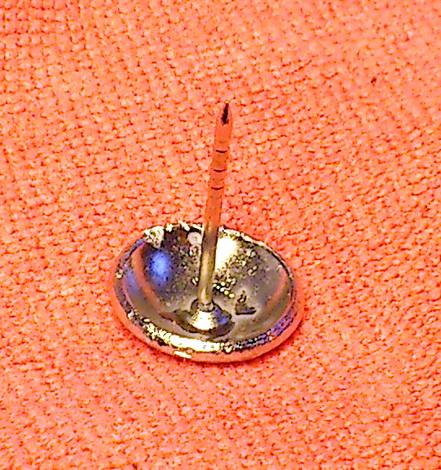
But drawing explaining the work of the castle.
On the locking pin stud has several shallow grooves, which increase the reliability of the latch lock. Are grooves at several levels that allows you to attach a label on the clothes from different tolschiny- thin underpants to what some thick Polten. (And do not morschitsya- is not a grammar lesson)
One of the main part of the castle is a tapered sleeve on the inside surface of the cone. Inside the sleeve there are 4 balls, which at the close of the castle, as if wedged between the tapered surface of the sleeve and between the grooves of the locking pin stud. On balls for reliable pushes the gland, which biases the spring. The nail is sitting tight. He can only move into the castle in the label, but not backward ...
When you open the lock from the side of the spring applied a strong magnetic field that pulls the gland themselves balls, thus freeing the locking pin stud. The nail is removed and then given commodity purchaser. Quite simply, reliably, and keeps completely tight.
In conclusion, I beg to believe that out of the store, I did not steal anything. RFID came to me by accident ...
Thank you for the attention.
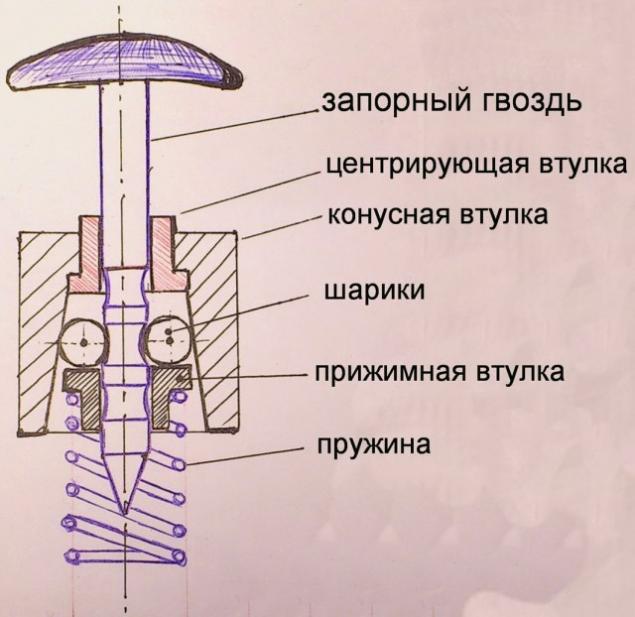
Source: pryf.livejournal.com
Out of curiosity, I decided to see what's inside a castle.

Author: I, in general is always understood that a lock opens a conventional magnetic field of a strong magnet (under the table at the cashier). But I always wondered how exactly such a lock arranged in fact.
So I curiously raskurochil it and decided to share the information with other people who are not familiar with the device vpadlu some fun devaysa.
Strongly do not beat the quality of the pictures. They will 5. One of them - an explanatory drawing of which will be understood by the lock device. (For chertezhik too, please do not hurt me ... Sloth avtokadit- was decided this way, the old-fashioned pen nakalyakat)
Thus, the knife housing disclose labels and find especially radio frequency LC circuit consisting of a capacitor and a few turns of wire.

There is no place for boring theory, so we will not go into such boring simple townsfolk concepts such as the quality factor of the oscillating circuit, explain just that, getting into the high-frequency magnetic field between two frames arranged directly before leaving the store, the LC circuit ( in antitheft tags) introduces a change in the oscillation process between the frames that immediately fixed electronic device and an alarm)
That's part of the zamka.Sleva right:
Nail, cone sleeve, balls, centering sleeve, push the sleeve and the spring.

locking stud, they pierce clothing and fix a label on the product.

But drawing explaining the work of the castle.
On the locking pin stud has several shallow grooves, which increase the reliability of the latch lock. Are grooves at several levels that allows you to attach a label on the clothes from different tolschiny- thin underpants to what some thick Polten. (And do not morschitsya- is not a grammar lesson)
One of the main part of the castle is a tapered sleeve on the inside surface of the cone. Inside the sleeve there are 4 balls, which at the close of the castle, as if wedged between the tapered surface of the sleeve and between the grooves of the locking pin stud. On balls for reliable pushes the gland, which biases the spring. The nail is sitting tight. He can only move into the castle in the label, but not backward ...
When you open the lock from the side of the spring applied a strong magnetic field that pulls the gland themselves balls, thus freeing the locking pin stud. The nail is removed and then given commodity purchaser. Quite simply, reliably, and keeps completely tight.
In conclusion, I beg to believe that out of the store, I did not steal anything. RFID came to me by accident ...
Thank you for the attention.

Source: pryf.livejournal.com
